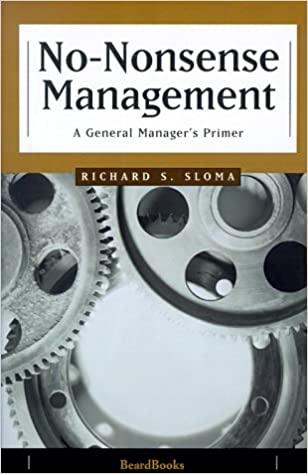Question
Need help with bolded italic items 2.0 LITERATURE REVIEW 2.1 Introduction This literature review strives to engage in a comprehensive analysis and synthesis of the
Need help with bolded italic items
2.0 LITERATURE REVIEW
2.1 Introduction
This literature review strives to engage in a comprehensive analysis and synthesis of the extensive body of research about the gap identifying EI and its implications for effectively managing organizational change in the retail industry (Holbeche, 2019; Naong & Naong, 2022). Organizations struggle to adapt to workplace changes, failing to accomplish strategic goals (Harsch & Festing, 2020). Retail executives with low EI struggle to manage complicated organizational changes, lowering staff performance and engagement (Ojo et al., 2021). Retail company executives require greater EI to handle complex transitions, requiring leadership interventions (Holbeche, 2019; Naong & Naong, 2022). The review will concentrate on important domains of investigation pertaining to leadership, organizational change, emotional perception and regulation, as well as specific concerns in the retail industry. The literature review aims to enhance our understanding of the importance of effective leadership practices in driving successful organizational change (Nordin, 2021). Exploring individuals' ability to perceive and manage their own emotions is crucial for comprehending how emotional intelligence contributes to workplace effectiveness (Alzoubi & Aziz, 2021). Finally, examining specific problems within the realm of retailing provides valuable insights into challenges unique to this industry (Yawson & Lewis, 2023). The literature review will encompass topics and concepts such as organizational change in the retail industry, including its challenges and opportunities with digital transformation. Additionally, it will explore the influence of emotional intelligence on leadership effectiveness when managing change, employee engagement, and organizational performance.
Emotional intelligence is underutilized in retail change management (Kotter et al., 2021). Research shows that leaders' emotional intelligence is poorly understood and implemented in organizational change (Irfan et al., 2021). The project addressed the theme and practice problem of retail executives' emotional intelligence deficit and its impact on their ability to navigate complex organizational changes (Huang et al., 2022). Technology, consumer preferences, and competition are changing the retail industry (Domingos & Leite, 2022). Thus, this sector requires strong leadership and change management. My specialty, leadership and organizational development, emphasizes retail CEOs' emotional intelligence to meet this demand.
Low EI in retail businesses leads to poor employee performance, reduced engagement, and organizational effectiveness (Parker, 2022). In a market with fierce competition, changing consumer tastes, and digital transformation, retail leaders require EI to navigate complex organizational shifts (Godwin, 2019). Academic and professional literature informs retail industry executive EI improvement programs, instruments, and interventions. The ultimate goal is to close the gap between theory and practice, providing leaders with tools to inspire, motivate, and lead their teams through change while maintaining optimism (Saring et al., 2022). By incorporating emotional intelligence into organizational transformation management, leaders can successfully navigate these changes and improve their businesses' competitiveness.This literature review serves as a foundation for determining how to accomplish the project's goals and to enhance my approach.
2.2 Method for Discovering Literature Prior to starting a formal review of the literature, you need to develop a method and strategy to search for literature, and develop literature-type inclusion and exclusion criteria.
In the Method for Discovering Literature section, you will describe and explain the strategy and process used for conducting and presenting the literature review.
Begin this section with a clear statement of the key topics included in the literature review. Follow with: Explain the search strategy used to find literature:
Identify databases used such as EBSCO, ABI, IBIS World, Nexis Uni, and Google Scholar. Include a description of your search strategies including keywords and search terms.
Identify your most important publication sources for scholarly and practitioner articles. Describe how you identified relevant literature concerning your topic.
Show that you recognize the significance of experts in the specialization domain. Define the inclusion criteria and exclusion criteria for the literature review process:
Explain your inclusion criteria for selecting and evaluating articles, providing a clear, detailed explanation.
Develop criteria to explain why you are including specific types of literature, such as peer-reviewed scholarly journal articles, review-type articles, conference papers, and credible practitioner literature drawn from sources such as trade journals, quality business magazines (i.e., Forbes, Fortune, etc.), consultant reports and articles, quality newspaper articles (i.e., Wall Street Journal), relevance to your topic, problem, and your specialization, and/or government reports.
Include a data range for sources in your inclusion criteria, recognizing that framework, theory, 19 model, and historic context articles/previous-effort -to-address the problem articles could be more than 5 years old.
Cite at least one source regarding literature inclusion criteria.
Explain your exclusion criteria for selecting and evaluating articles, providing a clear, detailed explanation.
Develop criteria to explain why you are excluding specific types of literature, such as untrustworthy sources (i.e., Wikipedia, newspaper editorial page or other subjective, opinion based articles, chat forums, etc.), literature with no relevance to your topic, problem, or your specialization, and/or foreign government sources with little or no applicability to your project industry context. Include a data range for sources in your exclusion criteria, recognizing that framework, theory, model, and historic context/ previous-effort-to-address the problem articles could be more than 5 years old.
Cite at least one source regarding literature exclusion criteria.
Ensure your inclusion and exclusion criteria closely align with the scope of the specific business problem, project objectives, and the project question, and the specialization domain.
Provides a superior and logically organized description of the methods for discovering literature, the key databases used, the key search terms, and the literature inclusion and exclusion criteria in expert alignment with the topic and specialization.
Step by Step Solution
There are 3 Steps involved in it
Step: 1

Get Instant Access to Expert-Tailored Solutions
See step-by-step solutions with expert insights and AI powered tools for academic success
Step: 2

Step: 3

Ace Your Homework with AI
Get the answers you need in no time with our AI-driven, step-by-step assistance
Get Started


